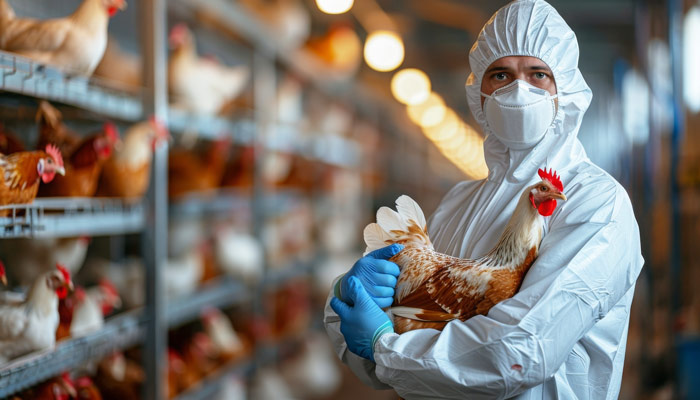
Another Pandemic on the Horizon?
Review of “How America Lost Control of the Bird Flu”
Original article appeared in Healthbeat, by Amy Maxmen, KFF Health News
As a society we would be better off viewing the COVID-19 pandemic as a test run rather than an outlier. Even if the current outbreak remains confined to dairy cattle it will still pack an economic impact.
The recent article from Healthbeat—”How America Lost Control of the Bird Flu, Setting the Stage for Another Pandemic”—delves into the escalating H5N1 avian influenza outbreak in the United States, highlighting its spread to dairy cattle and the potential implications for human health.
Initially confined to poultry, the H5N1 virus has now been detected in at least 860 dairy herds across 16 states—signaling a significant breach in containment efforts. This expansion into cattle populations has led to notable economic repercussions, including decreased milk production and increased mortality rates among infected livestock. The U.S. Department of Agriculture (USDA) has allocated more than $430 million to combat the virus in dairy farms, supplementing the more than $1.7 billion directed toward poultry farms since 2022. Despite these investments, the virus’s persistence indicates systemic challenges in current containment strategies.
A critical concern is the zoonotic potential of H5N1. More than 60 human infections have been reported in the U.S., primarily linked to direct contact with infected animals. The recent severe case in Louisiana underscores the virus’s capacity to cause critical illness in humans. Experts warn that minimal genetic mutations could enable efficient human-to-human transmission, elevating the risk of a pandemic. The Centers for Disease Control and Prevention (CDC) maintains that the current risk to the general public is low; however, the evolving situation necessitates vigilant monitoring and preparedness. [NOTE: As of January 6, 2025, the first H5 bird flu death of a human was reported.]
The article critiques the timeliness and effectiveness of governmental responses, noting delays in implementing nationwide testing and containment measures. The USDA’s recent federal order to test raw milk for H5N1 is seen as a reactive step, coming months after initial detections in cattle. Additionally, the piece highlights the strain on public health resources and the need for enhanced safety protocols for agricultural workers, who are at increased risk of exposure.
“We are in a terrible situation and going into a worse situation. I don’t know if the bird flu will become a pandemic, but if it does, we are screwed.”
~Angela Rasmussen, virologist at the University of Saskatchewan in Canada
Further Reading
Current Agricultural Testing Policies:
The U.S. Department of Agriculture has initiated a nationwide testing program for bird flu in raw milk to better understand the virus’s prevalence among dairy herds. This federal order mandates that unpasteurized milk samples be collected and analyzed to monitor and control the spread of H5N1.
Transmission Risks from Cattle to Humans:
The Centers for Disease Control and Prevention (CDC) has expanded guidance to protect farm workers from bird flu, acknowledging the potential for transmission from infected animals, including cattle, to humans. The guidance includes recommendations for personal protective equipment and testing protocols to mitigate risks.
Economic Impact of 2023 Bird Flu Outbreaks:
The current avian influenza outbreak has over the past three years led to significant economic losses, with estimates ranging from $2.5 to $3 billion in the United States. These costs encompass animal losses, decreased production, and expenditures related to containment efforts, underscoring the substantial economic burden of such outbreaks.
#Pandemic | #PublicHealth | #TranslationalMedicine | #VeterinaryMedicine | #ViralOutbreaks





